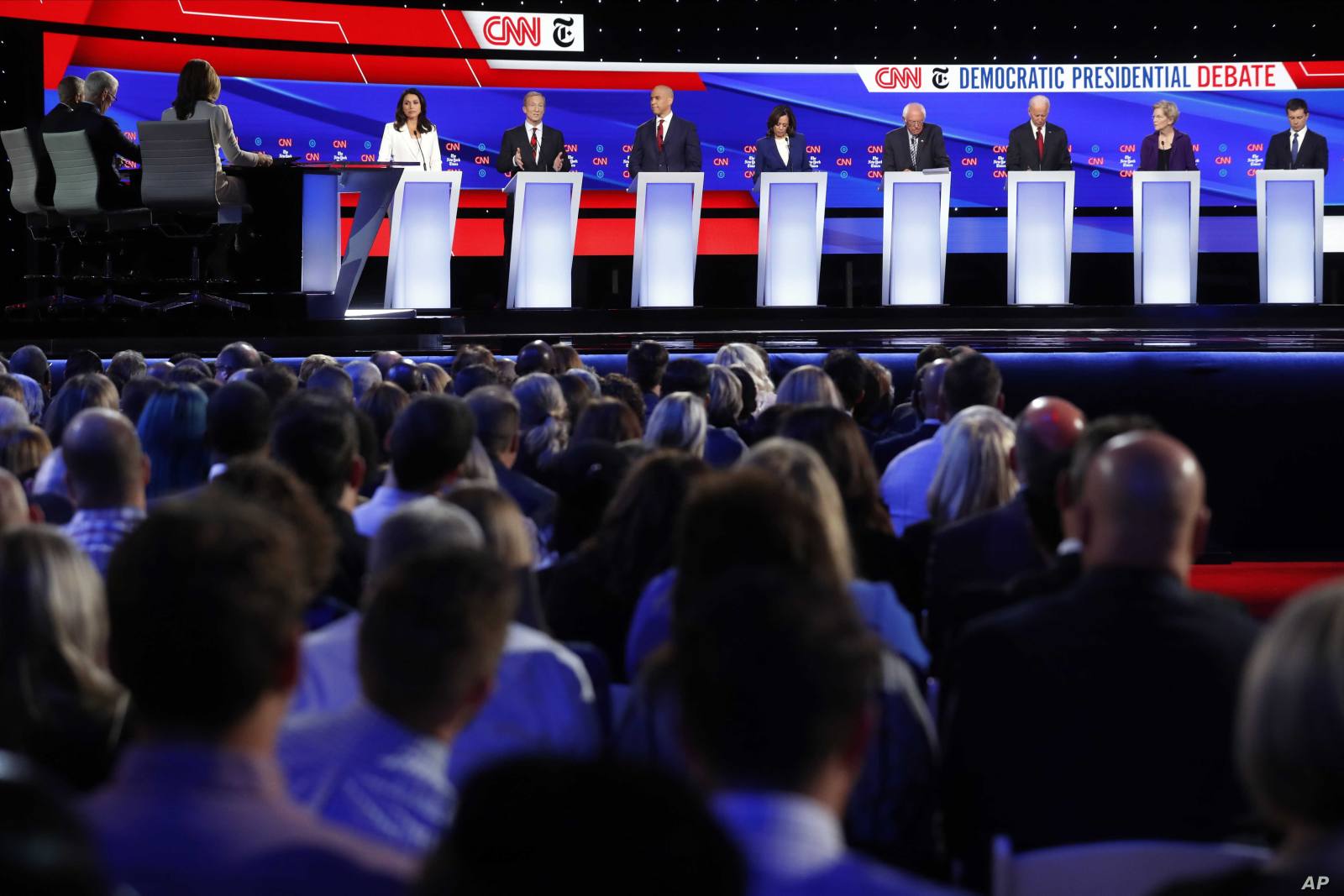The clunky and somewhat outdated process of how major parties select their presidential nominees is often criticized for being out of touch with modern politics. Beyond the caucus and primary voting itself, which often relies on a field of candidates that have been narrowed by arbitrary rules concerning debate participation, it’s the overall way that the parties approach the process of building a field in the first place which seems to provide skewed results.
So, what can be done to improve the presidential primary process? Writer David Leonhardt opined on Sunday in the New York Times calling the current process “absurd,” and suggested several ways to improve things:
It is, as Jonathan Rauch and Ray La Raja recently wrote in The Atlantic, “a spectacle that would have struck earlier generations as ludicrous.” It has come to resemble a reality television show, in which a pseudo-scientific process (polls plus donor numbers) winnows the field. The winner is then chosen by a distorted series of primaries and caucuses: The same few states always get outsize influence, and a crude, unranked voting system can produce a nominee whom most people don’t want.
No wonder the current president is a reality-television star, not to mention the most unfit occupant of the office in our country’s history. “The victory of Donald Trump in 2016 is best understood as a failure of the process,” the political scientist Jonathan Bernstein has written, “and a failure of the Republican Party to prevent an outsider from taking its presidential nomination — the most important thing that U.S. political parties have.”
Republicans nominating Donald Trump in 2016 is only seen as a failure if you’re not a voter or supporter of his. If you ask his base, they’d argue that Leonhardt is wrong and that the process works just fine. On the other hand, Trump didn’t win the popular vote, so the argument that the current process can produce skewed candidates that don’t appeal to a broad electorate could be considered accurate.
Aside from identifying the issue of creating a “reality show” atmosphere, where candidates simply compete for attention and try to stand out with sometimes outlandish statements, what does Leonhardt propose to fix the issue?
His suggestions boil down to a few changes which would create a different field of candidates for voters to choose from and also ensure that current officeholders, like Montana Gov. Steve Bullock, for example, would be guaranteed a spot on a Democratic debate stage:
The first change should be to the debates. The candidates’ electoral history and qualifications currently count for nothing. The 2020 Democratic field, for example, has included four two-term governors, all of whom have been excluded from debates despite a track record of winning votes and governing successfully. In their place have been candidates, like Yang, who managed to crack 4 percent in a few polls.
It makes more sense for only the true polling leaders to be guaranteed debate slots. Beyond them, the party could set aside at least one spot for a governor and perhaps one for a senator from a large state or swing state.
This suggestion seems very reasonable. It does seem absurd, to borrow Leonhardt’s word, that sitting Senators and Governors are being left off the debate stage because they aren’t hitting an arbitrary polling threshold. Capping a debate stage at a certain number of candidates, of which certain slots are reserved for a current governor or senator, or even a congressman, seems reasonable to ensure a wider cross-section of the party’s bench.
Gov. Bullock, of Montana, for example, is a rare Democrat who won a Trump state quite easily in 2016. Under the current rules, he has basically no chance of getting anywhere close to the debate stage which has relegated his campaign into non-existence. The same can be said for Sen. Bennet, of Colorado, a pivotal state that Democrats need to hold in 2020.
Beyond the debates, what about the individual states? Leonhardt has some suggestions there as well:
A second set of changes would involve the primaries themselves. More states should adopt ranked-choice voting, allowing voters to list their second and third choices. Memphis, Minneapolis, New York City, San Francisco and the state of Maine, among other places, have adopted this system for some elections.
Ranked choice can prevent the Trump phenomenon during the 2016 Republican primaries. Trump may have solid Republican support today, but he didn’t back then. Even though most Republican voters opposed him, his dedicated base let him emerge from a large field.
Donald Trump coasted through with a ceiling of support early on that maxed out in the mid-thirties. In a large field, however, that’s all he needed to win several early states that were winner-take-all in terms of delegates. The result was a lopsided delegate count that gave him an early lead despite sixty percent or more, in many cases, of Republicans voting for someone else.
The Democratic Primary is a little different in terms of awarding delegates since their side is entirely proportional. There is no winner-take-all among Democratic primaries and caucuses so coasting by with thirty percent support is possible, but a little harder. The battle between Hillary Clinton and Bernie Sanders in 2016 is a good example of how the proportional delegate system can help keep a candidate from running away with the nomination once the field is narrowed.
Each and every one of these changes would ruffle feathers somewhere along the line. If the debate rules alotted special placement for Senators or Governors, then some current candidates would be left off the stage causing them to complain. It’s impossible to please everyone, but it’s certainly prudent to discuss changes that could improve the process.
Donate Now to Support Election Central
- Help defend independent journalism
- Directly support this website and our efforts
